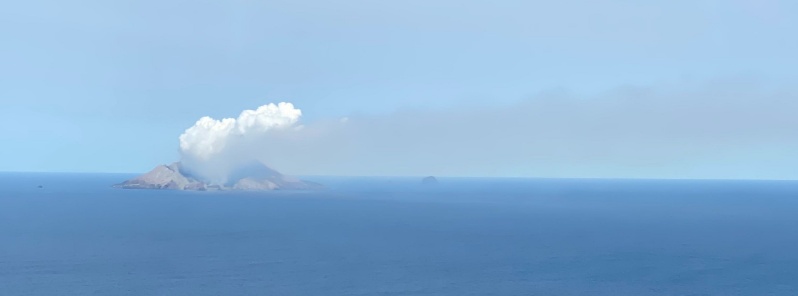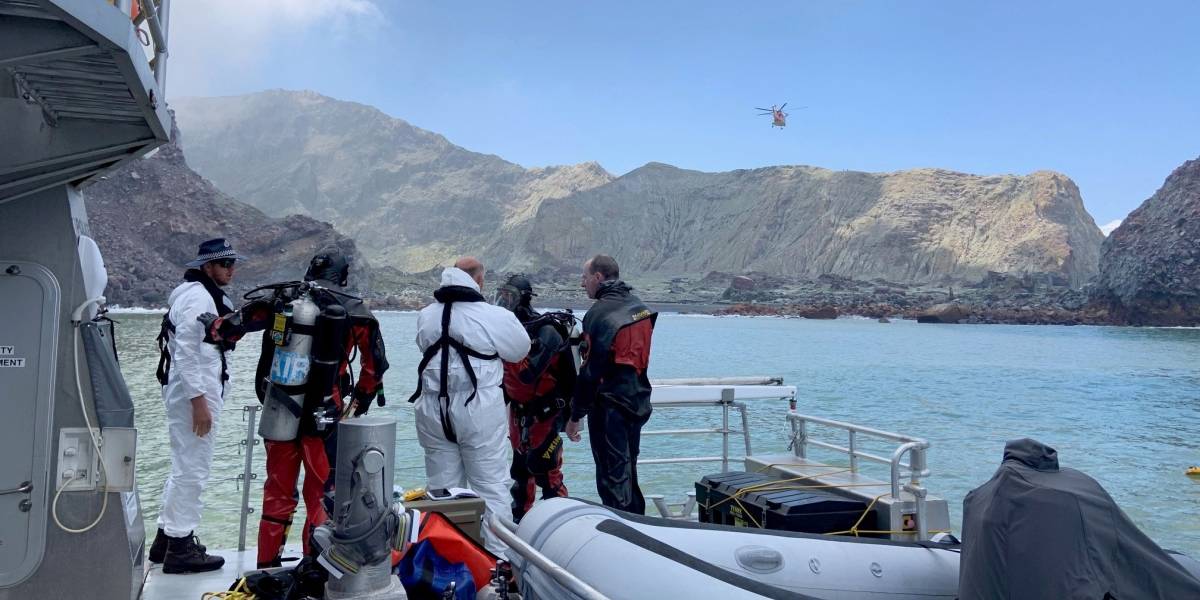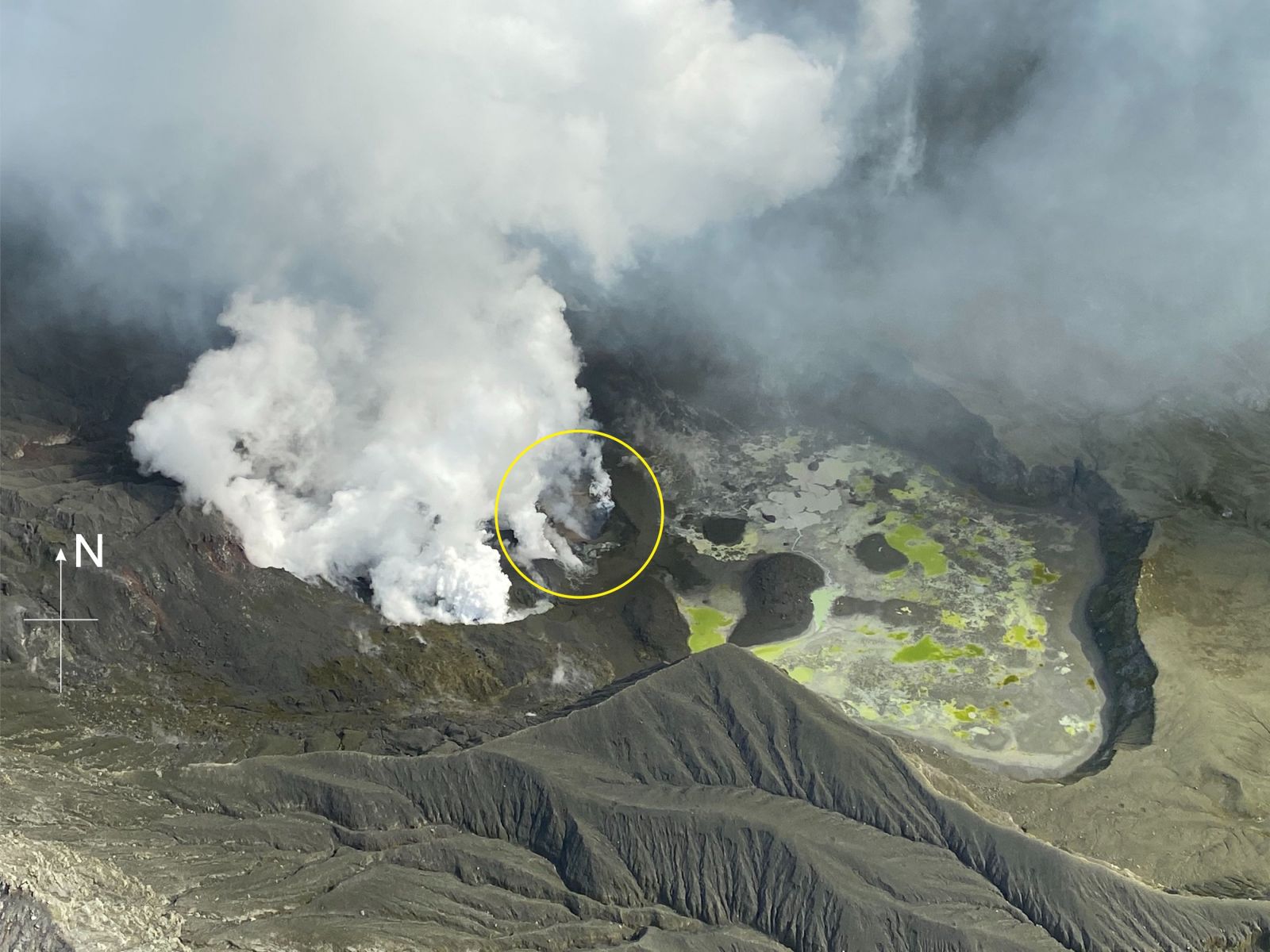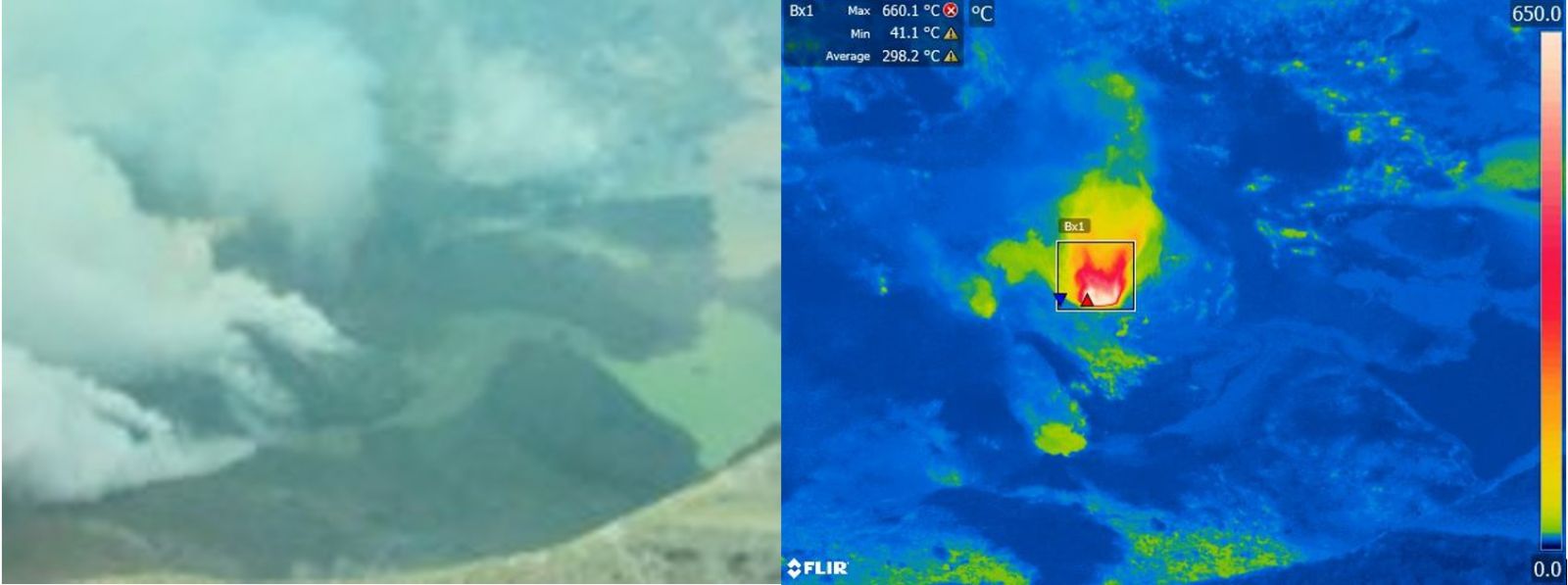Very hot gas and steam emissions continue at White Island volcano, death toll increases to 19, New Zealand

Very hot gas and steam continue to be discharged from active vents at the back of the White Island crater basin. Volcanic tremor and other seismic activity continue at a low level. The expert judgment today is that there is a 2-10% chance (very unlikely) of an eruption occurring that could impact the area beyond the vent within any 24 hour period through to Monday, January 6, 2020. The Volcanic Alert Level remains at Level 2 and the Aviation Color Code at Orange.
The number of casualties after the eruption on December 9th rose to 19 on Monday, December 23, after another person died at an Auckland hospital overnight. The number includes the two people who are still missing (presumed dead).
There were 47 people visiting the island when the volcano erupted, killing 13 people initially and leaving more than two dozen others hospitalized with severe burns. The latest victim is the 6th person to die in hospitals in New Zealand and Australia in the two weeks since the eruption. Many of the killed and injured were Australian tourists who had been traveling aboard the Royal Caribbean cruise ship Ovation of the Seas.
"Police can confirm a further person has died in Middlemore Hospital last night following the Whakaari / White Island eruption," Deputy Commissioner John Tims, National Operations Commander (NZ Police), said early December 23.
"The death of this person brings the official number of deceased to 17, 16 of whom died in New Zealand and one in Australia."

Police divers prepare to search the waters for missing persons on December 14, 2019. Credit: New Zealand Police
"An extensive aerial search for further victims was conducted by Coastguard and Police over the weekend, between the island and the mainland," Bay of Plenty District Commander, Superintendent Andy McGregor, said. "No further items of significance were located."
"The Police will review the search area to date and make a decision on further search activity," McGregor said.

Active vent area at White Island volcano on December 14, 2019. Credit: GNS Science
No further eruptive activity has occurred since the eruption on December 9, GNS Duty Volcanologist Steve Sherburn noted December 23. The level of volcanic tremor and other seismic activity remains low, but strong flows of steam and gases continue from the new vent area.
"The expert judgment made this morning calculated the likelihood of another eruption occurring between now and midday Monday, January 6th. This judgment translates to another eruption being very unlikely (2 – 10%) within any 24-hour period through to midday Monday, January 6th. Consequently, the distances for GNS Science staff access zones have been reduced, but remain too large for GNS Science staff to access the island. The expert judgment will be reviewed again on Monday, January 6th, or sooner if the level of activity changes," Sherburn said.

Images courtesy GNS Science. Acquired: December 20, 2019
An explosive eruption from the hot gas vent area remains possible and could occur with no precursory activity, especially if there is a collapse of unstable material around one of the vents, or if the gas emission decreases markedly, allowing water to enter the hot gas vent. Sudden steam/gas eruptions from other active vents are also possible, he added.
However, should any explosive activity produce an ash cloud there remains a low likelihood of ash affecting the mainland in the next week.
All GNS monitoring equipment on the island is operating, except for the camera at the old factory site.
Geological summary
Uninhabited 2 x 2.4 km (1.2 x 1.5 miles) White Island, one of New Zealand's most active volcanoes, is the emergent summit of a 16 x 18 km (10 x 11.2 miles) submarine volcano in the Bay of Plenty about 50 km (31 miles) offshore of North Island.
The island consists of two overlapping andesitic-to-dacitic stratovolcanoes; the summit crater appears to be breached to the SE, because the shoreline corresponds to the level of several notches in the SE crater wall. Volckner Rocks, four sea stacks that are remnants of a lava dome, lie 5 km (3.1 miles) NNE.
Intermittent moderate phreatomagmatic and strombolian eruptions have occurred throughout the short historical period beginning in 1826, but its activity also forms a prominent part of Maori legends.
Formation of many new vents during the 19th and 20th centuries has produced rapid changes in crater floor topography. Collapse of the crater wall in 1914 produced a debris avalanche that buried buildings and workers at a sulfur-mining project. (GVP)
Featured image: White Island volcano on December 15, 2019. Credit: NZ Police

Commenting rules and guidelines
We value the thoughts and opinions of our readers and welcome healthy discussions on our website. In order to maintain a respectful and positive community, we ask that all commenters follow these rules:
We reserve the right to remove any comments that violate these rules. By commenting on our website, you agree to abide by these guidelines. Thank you for helping to create a positive and welcoming environment for all.